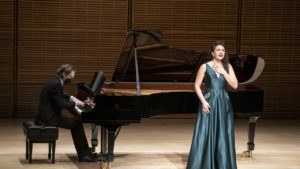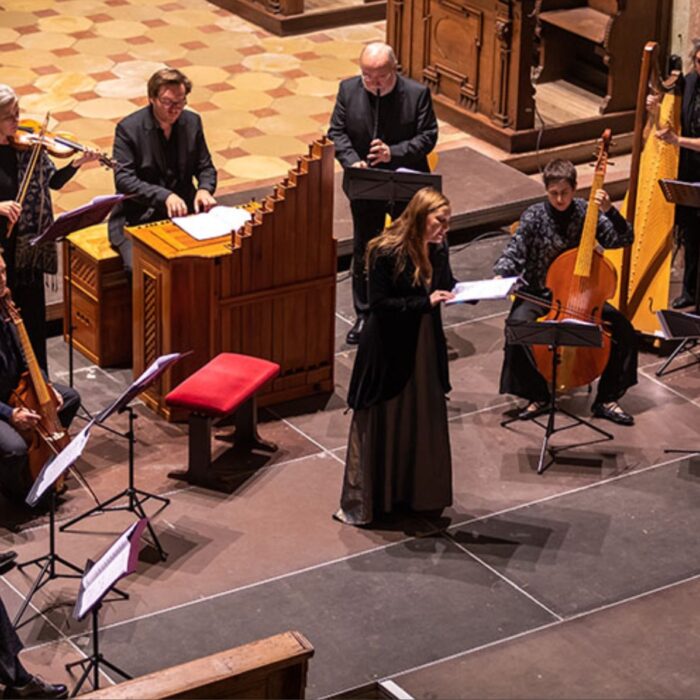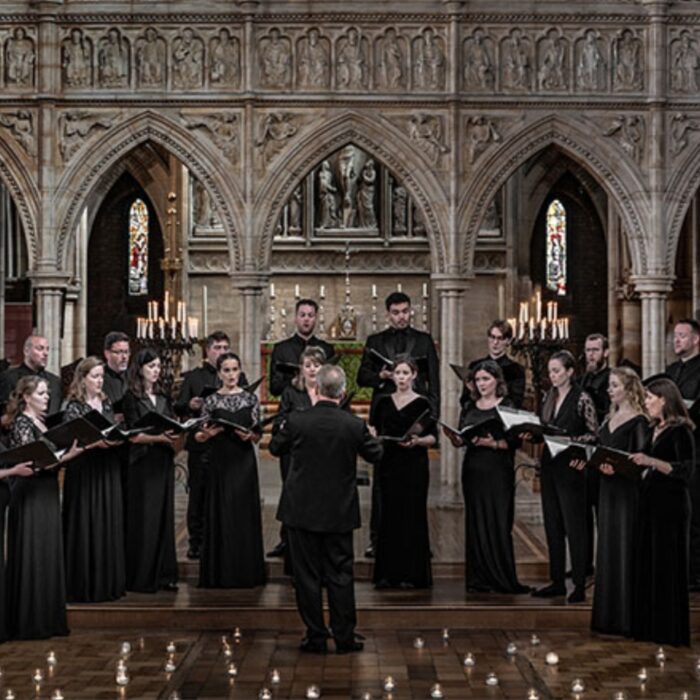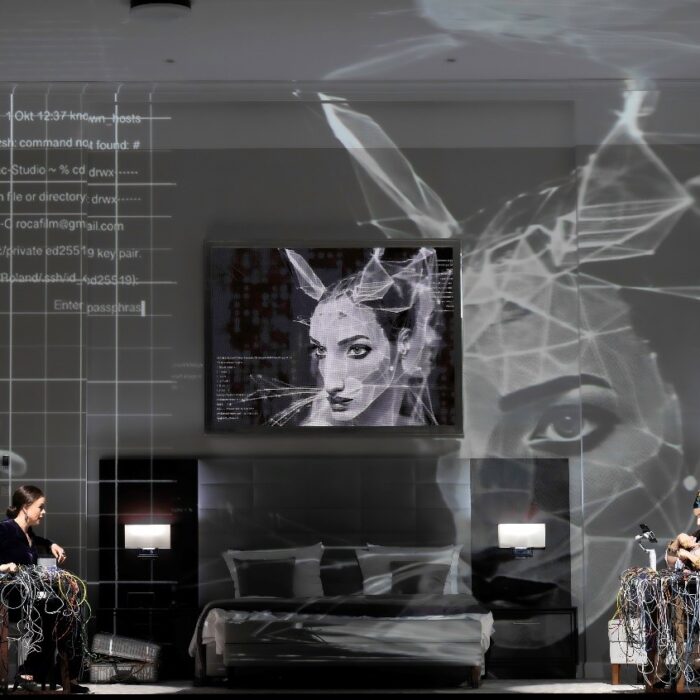
Carnegie Hall 2022 Review: SongStudio 2022 Young Artists Recital
By Chris RuelPhoto: Stephanie Berger
This is the story of 20 young artists who played and sang their way to Carnegie Hall. These talented musicians came from Denmark, New Zealand, Oman, the United Kingdom, the United States, and Uruguay to attend SongStudio 2022, a weeklong experience where young vocalists pair up with young collaborative pianists to immerse themselves in song and grow their skills under the mentorship of some of today’s brightest stars.
Launched in 2017 and led by Renée Fleming as Artistic Director, SongStudio is “designed to renew and refresh the presentation and experience of the vocal recital,” according to the program’s official description. Since the reopening of New York’s classical music venues, I’ve spent the bulk of my time in recital halls, listening to well-established, high-profile artists. Every vocalist and their collaborative pianists were not far behind, talent-wise; they were that good. An intense week of masterclasses with Fleming, Anthony Roth Costanzo, Isabel Leonard, and Hartmut Höll, undoubtedly brought the participants to a new level and passed along knowledge that they will treasure and use throughout their careers.
The 2022 SongStudio class put on a mighty fine evening of song. They not only showcased their amazing talents but also foregrounded lesser-known works by composers ranging from Purcell to Schoenberg. The program crossed centuries and comprised song from the English, French, German, Russian, Spanish, and Swedish repertoires, with the French and German song dominating the selections with 15 pieces. The rep seemed tailormade for the vocalist/pianist duos, with no one seeming out of their element or unfamiliar with the nuances of the pieces. Rather, they freely explored their instruments, perhaps liberated by what they had learned during the masterclasses.
Song recitals present challenges for all involved, and those that the artists face are not dissimilar from that which the audience must reckon: meaning and emotion are expressed through voice, body, and piano. This leaves the audience to interpret the subtleties of each. It’s a tricky art form for all involved, so when you see and hear young artists knock songs out of the park, it’s thrilling.
SongStudio’s class of 2022 comprised three sopranos, two mezzo-sopranos, a countertenor, two tenors, a baritone, and a bass-baritone, each with their own collaborative pianist. Singers and pianists who had previously worked together could apply and, if invited, attend as a duo. SongStudio leadership paired individual invitees with either a vocalist or pianist. The quality of the performances did not indicate that a vocalist and pianist may have only joined forces five days prior to the recital.
Sopranos
Mer Wohlgemuth, accompanied by Pierre-Nicolas Colombat, provided an important lesson in music history by presenting two composers from the Second Viennese School in reverse chronological order. The duo, unlike their peers, introduced the pieces and their rationale for ordering them as they did: Wohlgemuth and Colombat showed how Schoenberg’s roots were planted in the late-19th century, with his earlier works resembling that of the Impressionists more than his later atonal compositions admit. The pair began with Webern’s “Drei Lieder, Op. 25,” comprising three songs, “Wie bin ich froh! (How happy I am!),” “Des Herzens Purpurvogel (The heart of the magenta bird),” and “Sterne, ihr silbernen Bienen (Stars, you silver bees of the night).” Wohlgemuth and Colombat were tight, and their close partnership was clear in Webern’s treacherous musical waters. The far-more-harmonic Schoenberg piece, “Erwartung, Op.2, No.1” followed Webern’s composition. The juxtaposition was a brilliant programming decision. I appreciated the context-setting introduction and thoroughly enjoyed the confidence and poise presented by this very well-paired team.
Tamra Grace Jones, accompanied by Francesco Barfoed, performed Debussy’s “Fêtes galantes, Set I,” comprising “En sourdine (Muted),” “Fantoches (Puppets),” and “Clair de lune (Moonlight).” Jones and Pak fully embraced the strange beauty of Debussy’s compositions. Jones’ pleasing, round sound in the low and middle ranges (“En sourdine”), playfulness (“Fantoches”), and somewhat lusty tone (“Clair de lune”) made her a delight to hear. Her diction was clear and natural, with every syllable snappy and crisp. She and Barfoed were unafraid of exploring dynamics, color, and mood, creating an intriguing set.
Toward the end of the German and French dominant program, Kathryn Henry, with her collaborator, Artyom Pak, brought Swedish into the mix with Jean Sibelius’ “Flickan kom ifrån sin älsklings möte, Op. 7, No. 5 (The girl returned from meeting her lover).” The inclusion was a delightful diversion from what came before, and Henry’s intense approach to the song about a lover’s tragic infidelity was full of genuine emotion and attention-grabbing intonation. This, along with Pak’s tempestuous playing, created a perfect storm of heartbreaking beauty.
Mezzo-Sopranos
Deepa Johnny and accompanist Matías Ferreyra performed three songs by Alberto Hemsi. Hemsi infused his music with Sephardic melodies, creating works in the tradition of his heritage. Johnny and Ferreyra showcased this heritage with “Triste esta la infanta, Op. 18, No.1 (Sad is the princess),” “El rey por muncha madruga, Op.8, No. 2 (The king, rising early in the morning),” and “Ya abaxa la novia, Op. 13, No. 6 (The bride is coming down).” Of the three, “Triste” captured my attention the most. Johnny’s passionate mezzo was beautifully displayed in this languid lament.
Krysten Chambers Jones and pianist Chun-Hsin Liu started with Debussy’s “La flûte de Pan, from Chanson de Bilitis (Pan’s Flute).” Liu led the way, propelling Jones’ forward motion with runs in the piano line. For their second song, Jones and Liu performed Brahms’ “Unbewegte laue Luft, Op. 57, No.8 (Motionless Balmy Air).” Here, Liu provided a foggy backdrop from which Jones’ voice projected soft strength that matched the languid text and music.
Countertenor
It’s fairly safe to assume that the countertenor of the group, Daniel Moody, worked with one of the best in the business—Anthony Roth Costanzo. Moody, and his collaborator, Gracie Francis, performed Purcell’s “Music for a while,” from “Oedipus, King of Thebes;” and Schubert’s “Am Tage aller Seelen, Litanei auf das Fest aller Seelen (On All Souls Day, Litany for the Feast of All Souls).”
I enjoyed how Moody and Francis opened their portion of the program not with Baroque countertenor fireworks, but with the relatively slow Purcell composition. Moody’s voice was calming and peaceful, but with the hymn-like Schubert piece, he possessed a crystalline sparkle, while his overall presence displayed utter confidence. At the piano, Francis showed herself to be a strong partner, as piano and voice meshed seamlessly.
Tenors
Laurence Kilsby, with pianist Ella O’Neill, kicked off the recital with Poulenc’s “Bleuet (Cornflower),” “Montparnasse,” and “Hyde Park.” Kilsby had several strengths that made his time onstage memorable: he had a standout stage presence, swagger, confidence in himself and his instrument. He had a beautiful sense of Poulenc’s music, following each of the score’s markings to a T; and his selections showed versatility of range and sensibility. O’Neill’s touch at the piano was tender and light, producing a dreamlike quality that underpinned the vocal line.
At the conclusion of “Bleuet,” Kilsby’s voice was cloud-like as he floated the final E sharp pianissimo. Kilsby and O’Neill took a song about war and death and— deeply in tune with Poulenc—fulfilled the composer’s contradictory understanding of the piece’s text and music.
Fellow tenor Richard Pittsinger and pianist Liza Armistead took on two English pieces; “Tis Nature’s Voice,” from “Hail, bright Cecilia;” and “At Day-Close in November” from “Winter Words: Lyrics and Ballads of Thomas Hardy, Op.52, No.1.” Pittsinger had strength, particularly in the upper register, hinting that within his lighter, lyrical voice, there’s some spinto ability that can be called upon when needed.
Baritone
Joseph Parrish and collaborator and Elias Dagher performed a diverse selection featuring Francesco Santoliquido’s “L’assiolo canta, from I canti della sera;” Rachmaninoff’s “V mojej dushe, Op. 15, No. 10 (In my Soul, Op. 14, No.10);” and Gustav Mahler’s “Aus! Aus! (Out! Out!).”
Parrish showed off an impressive range with his round, potent, take-notice voice. I particularly enjoyed the Mahler number, where Parrish set his brassy tone free in this martial-like piece. The vocalist and pianist had some fun at the close of the song. When Parrish sang the final “Aus! Aus!” he chased Dagher from the stage!
Bass
Yue Wu and pianist Tongyao Li were an excellent team, taking on Brahms’ “Wie Melodien zieht es mir, Op. 105, No. (As melodies draw me),” and Duparc’s “Phidylé.” I found Wu’s voice full of honey and containing an august maturity unexpected in a young bass. He showed dexterity in both selections and his versatility, imbued with solid low notes and a strong middle.
The artists onstage undoubtedly brought the lessons of the week to their performances. What those were, I do not know, but I could sense their energy, excitement, and joy at trying something new. This was the artists’ night to show off, and they did, impressively.



